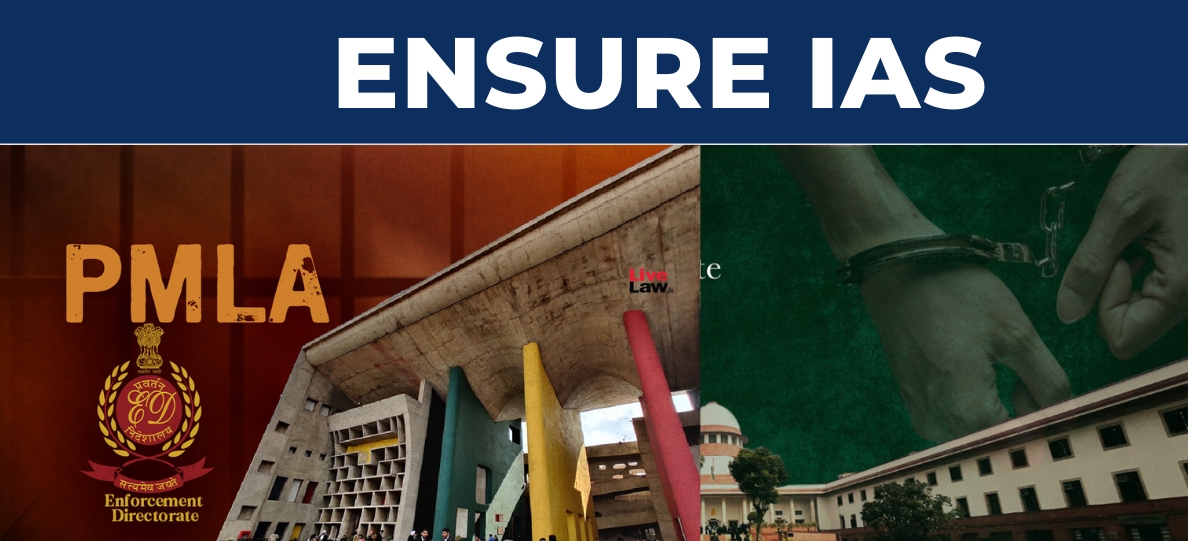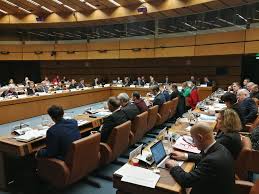- Courses
- GS Full Course 1 Year
- GS Full Course 2 Year
- GS Full Course 3 Year
- GS Full Course Till Selection
- CSAT
- 5 LAYERED ARJUNA Mentorship
- Public Administration Optional
- Online Program
- GS Recorded Course
- NCERT Batch
- Polity Module Course
- Geography Module Course
- Economy Module Course
- AMAC Module Course
- Modern India, Post Independence & World History Module Course
- Environment Module Course
- Governance Module Course
- Science & Tech. Module Course
- International Relations and Internal Security Module Course
- Disaster Management Module Course
- Ethics Module Course
- Essay Module Course
- Current Affairs Module Course
- ABOUT US
- OUR TOPPERS
- TEST SERIES
- FREE STUDY MATERIAL
- VIDEOS
- CONTACT US
SC Criticizes ED in Shine Group Case & Explains PMLA Bail Exception for Women
SC Criticizes ED in Shine Group Case & Explains PMLA Bail Exception for Women

- On January 15, 2025, the Supreme Court of India (SC) ruled against the Enforcement Directorate (ED) for misinterpreting a key rule in the Prevention of Money Laundering Act (PMLA), in the bail plea of Shashi Bala.
- The case involves the Shine City Group, a real estate company accused of cheating investors out of Rs. 800-1000 crore.
- The SC granted bail to Shashi Bala, a government school teacher, even though the ED opposed it, arguing that the PMLA's exception for women should not apply in her case.
What is Money Laundering?Money laundering is the illegal process by which criminals conceal the origins of illegally obtained funds. It involves a series of financial transactions designed to make illicit money appear legitimate. Criminal activities such as drug trafficking, corruption, tax evasion, fraud, and terrorism financing typically generate the illicit funds that are laundered. Stages of Money Laundering
Common Methods of Money Laundering
|
Recent Key Points :
1. The Shine City Group Case: Background & Allegations:
- Shine City Group: A real estate company based in Lucknow, accused of running a large-scale investment fraud. The group collected a lot of money from the public, promising high returns on real estate investments, but never provided the returns.
- Total Defrauded: The company defrauded investors of Rs. 800-1000 crore, leading to over 550 FIRs filed by the Uttar Pradesh Police.
- The Enforcement Directorate (ED) started an investigation based on these fraud reports.
- Rasheed Naseem, the promoter of the Shine City Group, is the main accused but is currently fleeing from authority.
- Shashi Bala’s Role:
- Bala, a government teacher, is accused of helping Naseem in hiding the illegal profits.
- She allegedly received over Rs. 36 lakh as part of the money laundering operation.
- She was arrested by the ED in November 2023.
2. Legal Framework: The PMLA and Bail Provisions:
- The PMLA has strict rules for granting bail in money laundering cases.
- Under Section 45(1), the accused must prove that there is no strong case against them and convince the court that they are not a threat to the investigation or likely to flee.
- This provision is meant to deal with serious financial crimes.
However, Section 45 includes an exception:
- Women, minors (under 16), and those who are sick or weak can be granted bail if the Special Court decides they are not a risk to the investigation or a flight risk.
- This is to protect vulnerable people from unnecessary harm.
3. ED's Argument: Opposition to Bail for Shashi Bala
The ED's Argument was that the usual strict bail conditions should apply to Shashi Bala, despite her being a woman. The ED argued that:
- The large scale of the fraud (Rs. 800-1000 crore) made Bala unfit for bail under the women’s exception.
- Her involvement in the crime, especially with the absconding Rasheed Naseem, made her dangerous and a possible threat to the investigation.
- However, the Supreme Court disagreed with the ED’s interpretation of the law.
4. Supreme Court’s Reprimand to the ED:
The Supreme Court Bench, led by Justices Abhay S. Oka and Augustine George Masih, criticized the ED for misunderstanding the law. Justice Oka commented:
- "If people who appear for the Union of India do not know basic provisions of law, why should they appear in the matter?"
- This showed the Court’s frustration with the ED's handling of the case.
- The Court emphasized that Section 45(1) of the PMLA clearly gives an exception for women, and this must be followed, regardless of the seriousness of the charges.
5. Court’s Decision: Granting Bail to Shashi Bala
Despite the ED’s objections, the Supreme Court decided to grant bail to Shashi Bala. The Court’s decision was based on several important factors:
- Time in Custody: Bala had been in custody since November 2023, and the trial was not likely to finish soon. The Court considered her prolonged detention in making the decision.
- PMLA’s Exception for Women: The Court pointed out that the PMLA’s provisions for women must be followed unless the woman is a flight risk or threatens the investigation.
- Legal Precedents: The Court referred to earlier cases where women were granted bail based on the same exception, making it clear that women in similar situations should be treated the same.
6. Legal Precedent: Previous Cases Involving Women’s Bail Under PMLA
-
Preeti Chandra Case (2023):
- In June 2023, the Delhi High Court granted bail to Preeti Chandra, wife of Sanjay Chandra, a director of Unitech Group, under the same rule for women under PMLA.
- The ED argued that Preeti was not a “household lady” and should not be given the benefit of this exception.
- The Delhi High Court rejected this argument, ruling that the PMLA does not treat women differently based on their role in society or work.
- The Court also made it clear that a woman’s profession or social status does not change her entitlement to the protection under the PMLA’s bail provision.
7. Allahabad High Court’s Rejection of Bail:
Before appealing to the Supreme Court, Shashi Bala had approached the Allahabad High Court for bail in September 2024. The High Court rejected her bail request because:
- Bala’s links to Rasheed Naseem and the large-scale fraud (Rs. 800-1000 crore) made her seem too dangerous for bail.
- However, the Supreme Court overruled this decision, highlighting that the PMLA’s exception for women should be applied, and granted her bail.
Prevention of Money Laundering Act, 2002 (PMLA)Objectives of PMLAThe Prevention of Money Laundering Act, 2002 (PMLA) was enacted in India to curb the illegal practice of money laundering. The main objectives of the PMLA are:
Key Provisions of PMLA
Agencies' Powers under the PMLA
Obligations under the PMLA:Financial Institutions and Intermediaries: Banks, financial institutions, and intermediaries are obligated to verify client identities, maintain records, and report suspicious transactions to FIU-IND. Key Structures under PMLA
Amendments to PMLA:The PMLA has undergone several amendments over the years:
Concerns Regarding PMLA:While the PMLA has been a crucial tool for combating money laundering, several concerns have been raised about its provisions:
|
|
Also Read |
|
UPSC Foundation Course |
|
| CSAT Foundation Course | |




